The inside of the reef, the poorly understood ‘dark reef,’ plays a larger role than previously thought in keeping coral reef ecosystems balanced. Photo credit: NOAA
Everywhere around her, it’s dark.
There is the sense of water flowing, bending lazily with the walls of the cave and propelling her along. She swirls gently into an eddy, understanding the tunnel has opened into a small chamber, but is quickly pulled back into a side channel. For a moment she is a bullet, her speed increasing as the water is constricted by the narrow walls around her, but in the next moment she slows to a crawl as she is dumped out into another cavity. Out of the darkness, a tentacle reaches out languidly, ready to pull her in for a quick meal. But the limb dwarfs her, and the water it moves in reaching out to grab her instead sends her careening away into empty space, at the mercy of the current. If she possessed a sense of self, she may have been thrilled to have narrowly avoided death. Instead, she’s mostly indifferent, and a little hungry.
She is on no particular trajectory and will drift in the inky darkness for her entire life, which may last only minutes.
The name of our brave little protagonist is Cypher, and she is a bacterium. Cypher makes her home deep inside a coral reef, drifting through the network of caves and crevasses that make up the interior of the massive reef structure. This winding, interconnected maze that Cypher calls home is the accumulation of millions of years of reef growth, a temple of incredible complexity built on the back of a bustling community. The corals above, which deposit a thick skeleton of limestone as they grow, don’t always do so evenly which leads to structures that look more like complex systems of passageways and caverns than solid layers of stacked rock. Corals, which need light, remain at the top of the rocky scaffold they’ve built, leaving the “dark reef” to a diverse array of critters, large and small, that thrive in the shadowy landscape.
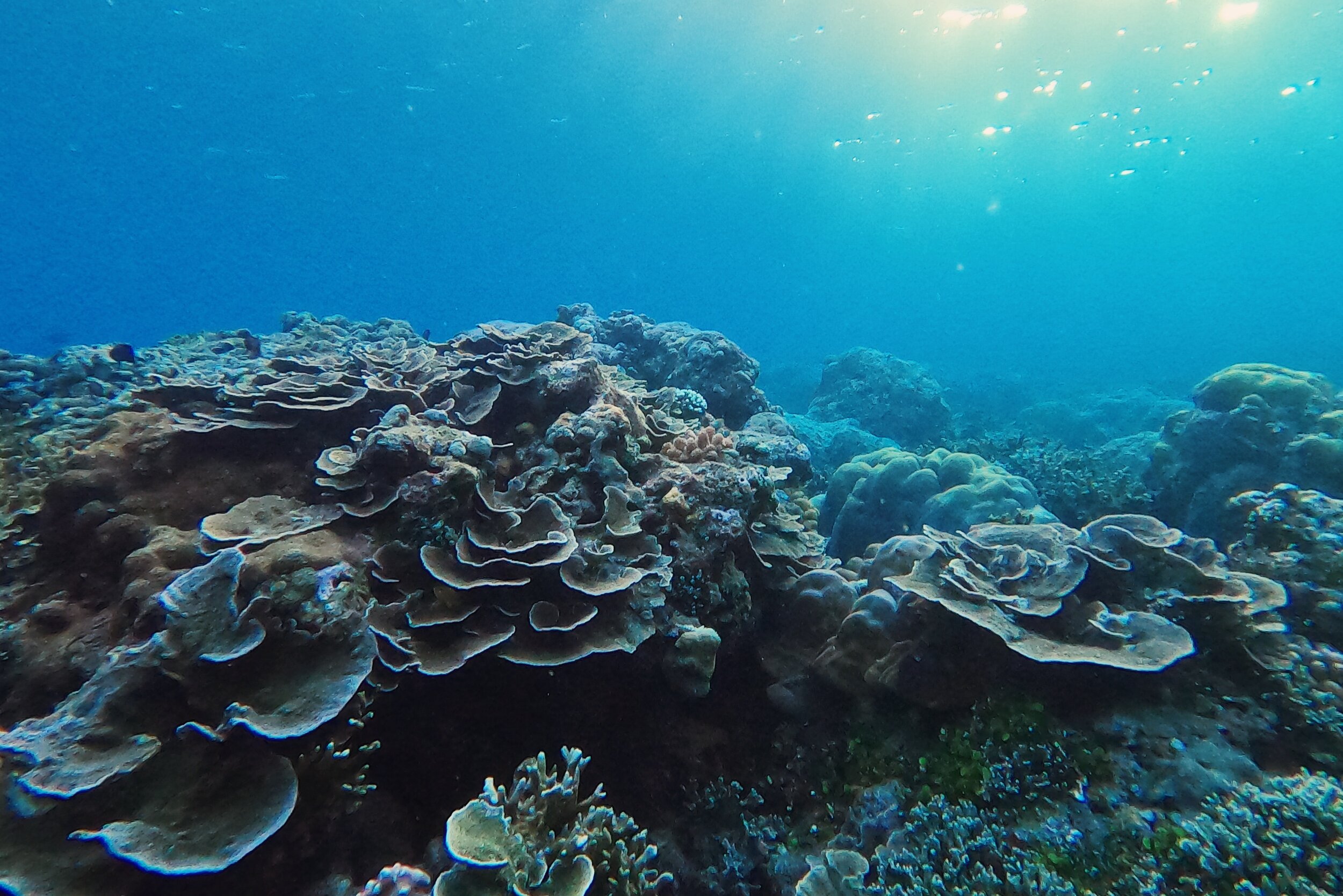

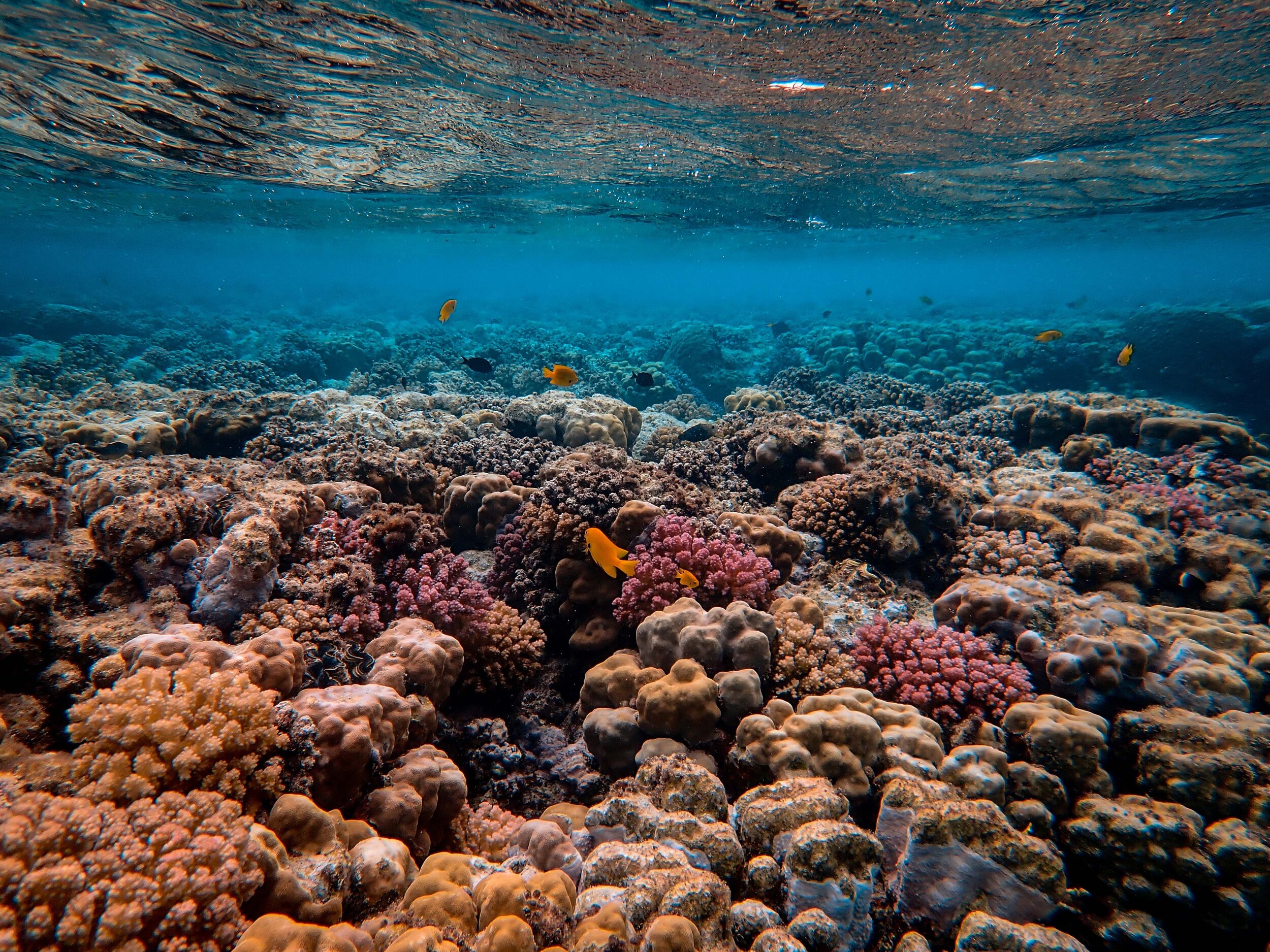
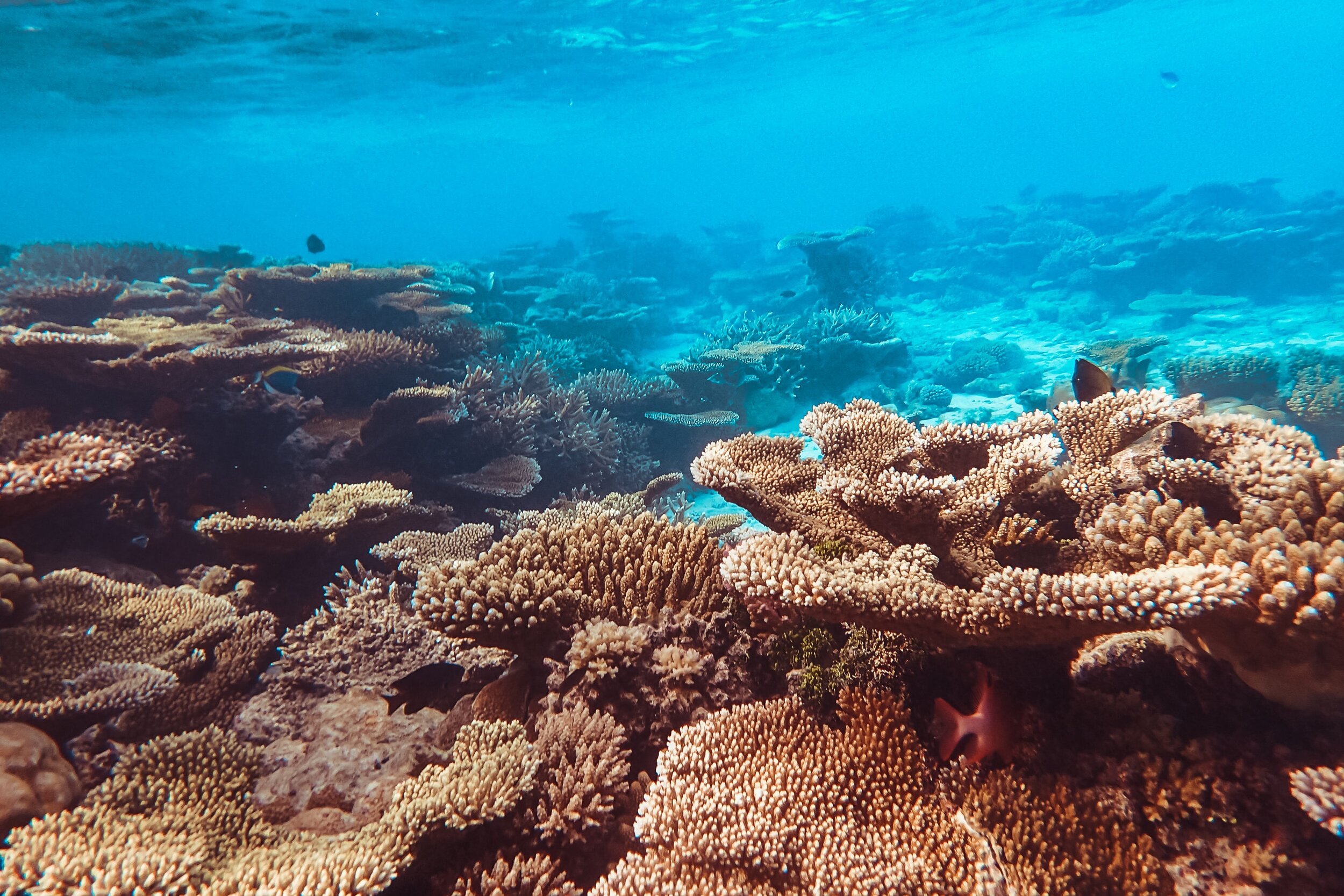
Within the tunnels, the sounds of shrimps clacking form a deafening chorus that reverberates off the limestone walls, emphasizing a truth Cypher is vividly aware of: she is not alone in the darkness. Strange, otherworldly creatures attached to the tunnel walls filter out bacteria, tiny plankton, and organic matter that flushes through the maze-like fissures of the dark reef. Single-celled protists, like microscopic cattle, swim through the tunnels grazing on bacteria like Cypher. Viruses, much smaller than Cypher but no less threatening, hunt for bacteria to consume, bleeding them dry of resources to produce more of their viral offspring.
Dangers abound for bacteria in the dark reef. But even surrounded by all these predators, Cypher and her kind still dominate in numbers.
As she floats in the darkness, Cypher senses a wave of chemicals wash over her, signaling the arrival of food. Her life won’t be long, but it is nutrient-rich, and here, she has an important job: Cypher processes waste. Every day, food filters down from the reef above: waste from reef organisms, excess sugars produced by all the reef photosynthesizers, and the remains of dead and decaying organisms. Cypher and her kind eat this waste, which is in a form inaccessible to most organisms, and in the process convert it into basic nutrients that the reef can use again. She uses these resources to make more of herself, dividing rapidly and spreading her bacterial clones throughout the dark reef to be consumed by protists, which get eaten by shrimp, which in turn get eaten by bigger and bigger fish.
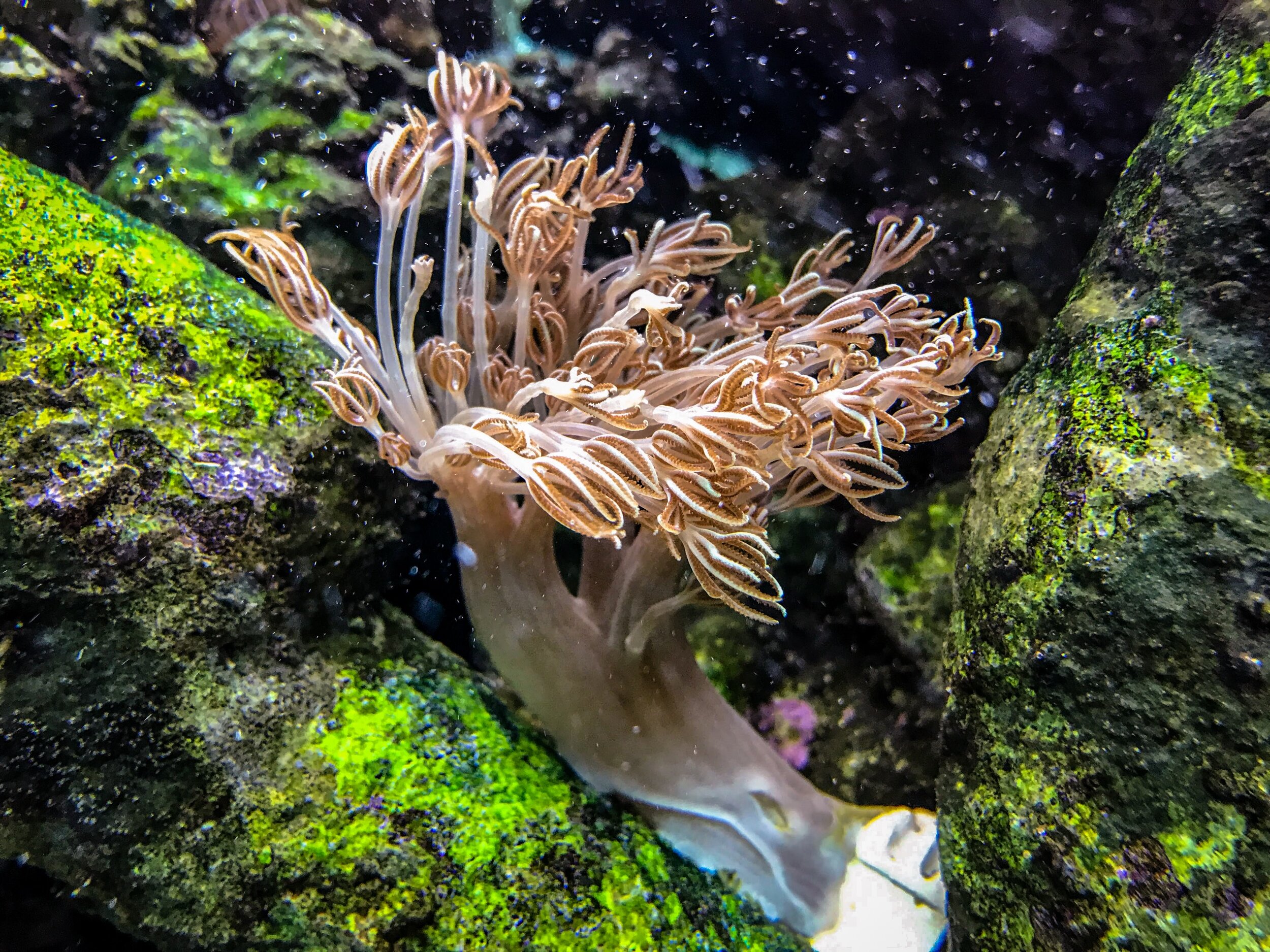

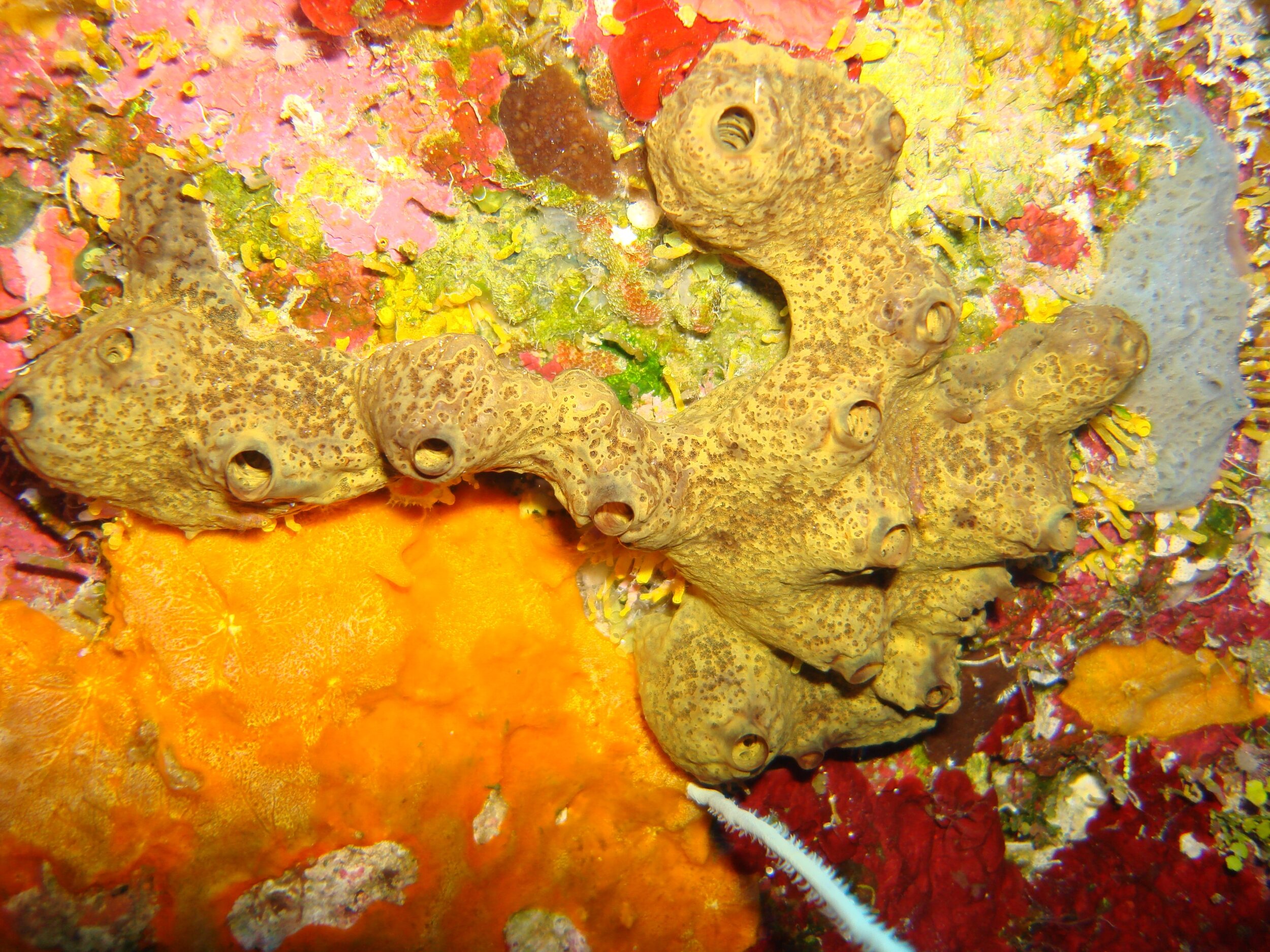
In this way, Cypher and her bacterial cousins ensure all of the nutrients on the reef are efficiently recycled, wasting no resource and keeping her home healthy. She will do this job faithfully until the day she meets her end in the pervasive darkness, getting broken apart and harvested by a virus, getting grazed by protists, or sinking peacefully to the seafloor to be buried in the sediments. There’s no hard feelings from the bacteria; it has been this way for millions of years.
But Cypher’s home is changing. Swarms of invaders have begun to sweep through the dark reef, and the environment around her is becoming more hostile: oxygen levels are decreasing, and Cypher’s food is becoming scarcer. Other types of bacteria are starting to accumulate here, which grow better on a different type of food: the waste of fleshy algae.
This type of algae, normally kept in check by grazers like fish and urchins, has begun to overgrow on the reef above Cypher as humans have decimated the grazing fish populations. Pollution, which Cypher feels the effects of even deep in the dark reef, is clouding the water. In response, the algae grows unchecked, covering the coral and bringing with it a new community of fast-growing and disease-causing microbes. The arrival of these bacteria herald the destruction of the ecosystem, a fate even the darkest reaches of the reef cannot escape.
A combination of pollution, overfishing, and disease are causing corals to be replaced with faster-growing algae on many reefs around the globe. Photo credit: Pascal Uhlig
Before long, light starts to filter into Cypher’s home, illuminating tunnels encrusted by patterned orange sponges, wispy bryozoans, and bulbous ascidians. The coral above has all but died, pushed out by the algae, ravaged by disease, and suffocated by lack of oxygen.
The reef, a structure millions of years of growth in the making, has begun to crumble into rubble. For Cypher, the exposure of the dark reef to the open sea means oxygen will once again fill the crevasses she travels, and for a while, she’ll be sustained on the wastes that dying organisms left behind. But eventually, she’ll be outcompeted by the algae-fed bacteria and Cypher, her many, many descendants, and most of the creatures she shared her home with, will cease to exist.
Such is the world of coral reef degradation: it is not simply the corals that die, but an entire ecosystem that collapses, replaced with algae, pathogenic bacteria, and little else. We call these reefs microbialized, and given enough time, they become dead zones, their diversity of life and vivid colors fading to greyscales. It has become clear that each part of the reef is critical to its overall health: the bacteria in the dark reef recycle the nutrients, the invertebrates control the bacteria, the fish graze the invertebrates and the algae, the sharks control the fish, and the corals keep on building, creating space for new growth. The reef is a living, breathing thing, and removing different pieces from this puzzle has caused global reefs to crumble further into rubble every day.
We are just now learning of the importance of the dark reef, whose role may differ slightly in every reef on Earth. But we are now confident about one thing: without the wonders happening in the dark, the reef will not survive. On some reefs, two thirds of the reef structure resides in the network of caves and crevasses that make up its interior, and half of all the life present on any coral reef may be carrying out its daily chores, poorly understood but nonetheless critical, in darkness. Fortunately, recent research on the role of the dark reef in coral reef health may give us better tools to help degraded reefs recover. The dark reef represents a brave, new frontier for us to come to a deeper understanding of the diverse, interconnected organism that is the living reef and, with all good luck, to learn how to rebuild it.
-Jason
Photo credit: Mael Balland



